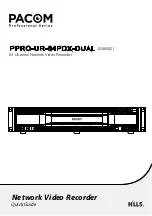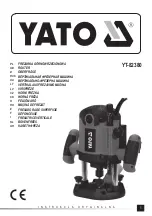
INS_CWGE24MS2_REV–
10/05/16 PAGE 186
INSTALLATION AND OPERATION MANUAL
CWGE24MS2
TECH SUPPORT: 1.888.678.9427
At the boundary, the roles of the MST ports do not matter, and their state is forced to be the same
as the IST port state (MST ports at the boundary are in the forwarding state only when the IST port
is forwarding). An IST port at the boundary can have any port role except a backup port role.
On a shared boundary link, the MST ports wait in the blocking state for the forward-delay time to
expire before transitioning to the learning state. The MST ports wait another forward-delay time
before transitioning to the forwarding state.
If the boundary port is on a point-to-point link and it is the IST root port, the MST ports transition
to the forwarding state as soon as the IST port transitions to the forwarding state.
If the IST port is a designated port on a point-to-point link and if the IST port transitions to the
forwarding state because of an agreement received from its peer port, the MST ports also
immediately transition to the forwarding state.
If a boundary port transitions to the forwarding state in an IST instance, it is forwarding in all MST
instances, and a topology change is triggered. If a boundary port with the IST root or designated
port role receives a topology change notice external to the MST cloud, the MSTP switch triggers a
topology change in the IST instance and in all the MST instances active on that port.
Interoperability with 802.1D STP:
A switch running MSTP supports a built-in protocol migration mechanism that enables it to
interoperate with legacy 802.1D switches. If this switch receives a legacy 802.1D configuration
BPDU (a BPDU with the protocol version set to 0), it sends only 802.1D BPDUs on that port. An
MSTP switch can also detect that a port is at the boundary of a region when it receives a legacy
BPDU, an MSTP BPDU (version 3) associated with a different region, or an RSTP BPDU (version 2).
However, the switch does not automatically revert to the MSTP mode if it no longer receives
802.1D BPDUs because it cannot determine whether the legacy switch has been removed from
the link unless the legacy switch is the designated switch. Also, a switch might continue to assign
a boundary role to a port when the switch to which this switch is connected has joined the region.
To restart the protocol migration process (force the renegotiation with neighboring switches), you
can use the clear spanning-tree detected-protocols privileged EXEC command.
If all the legacy switches on the link are RSTP switches, they can process MSTP BPDUs as if
they are RSTP BPDUs. Therefore, MSTP switches send either a version 0 configuration and TCN
BPDUs or version 3 MSTP BPDUs on a boundary port. A boundary port connects to a LAN, the
designated switch of which is either a single spanning-tree switch or a switch with a different MST
configuration.
















































